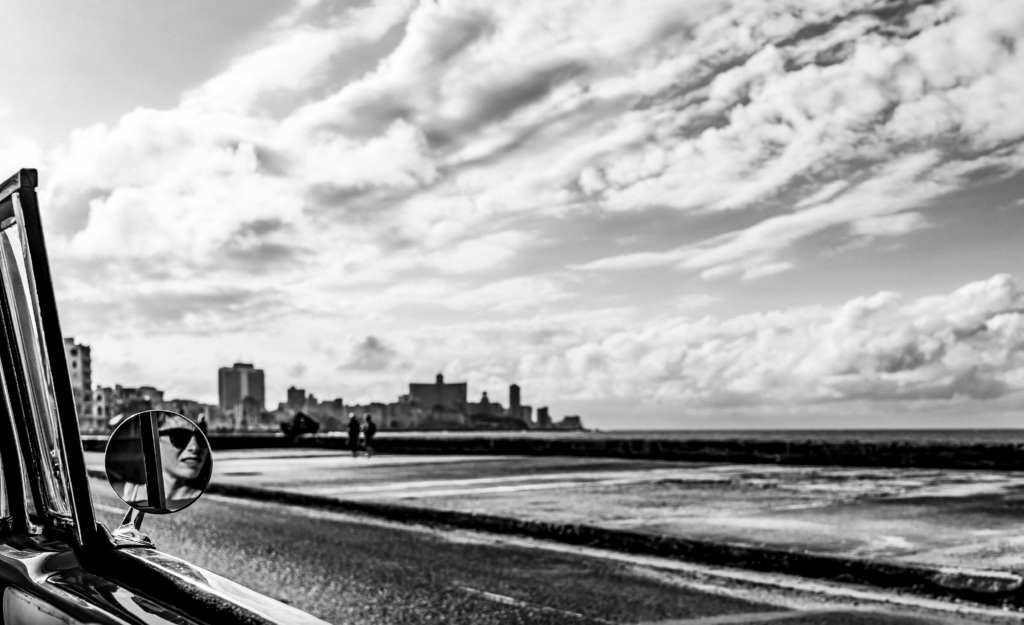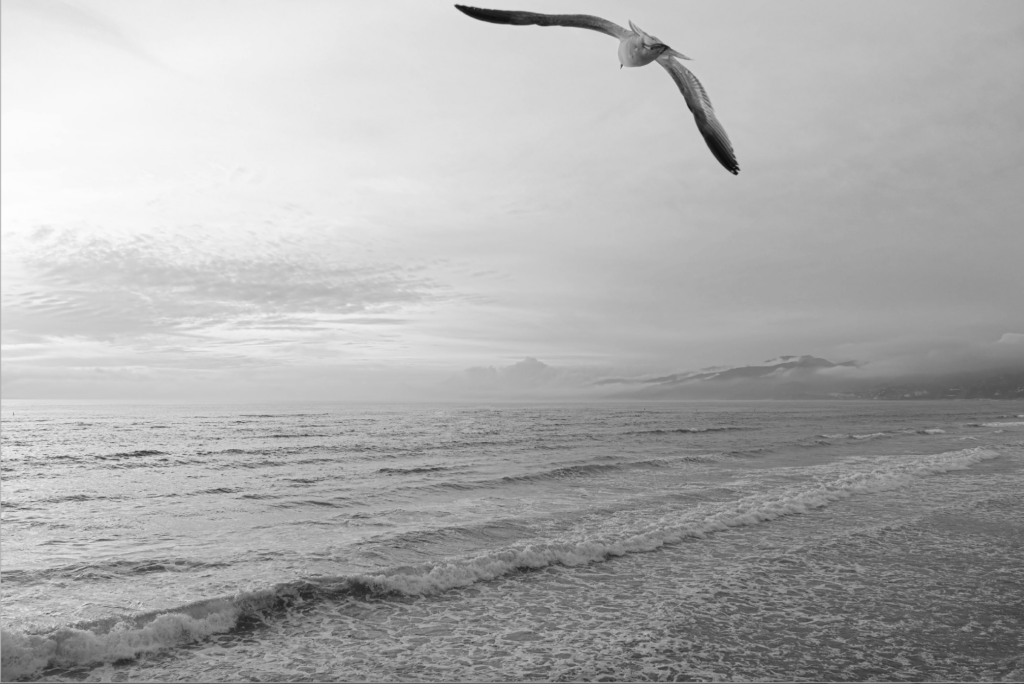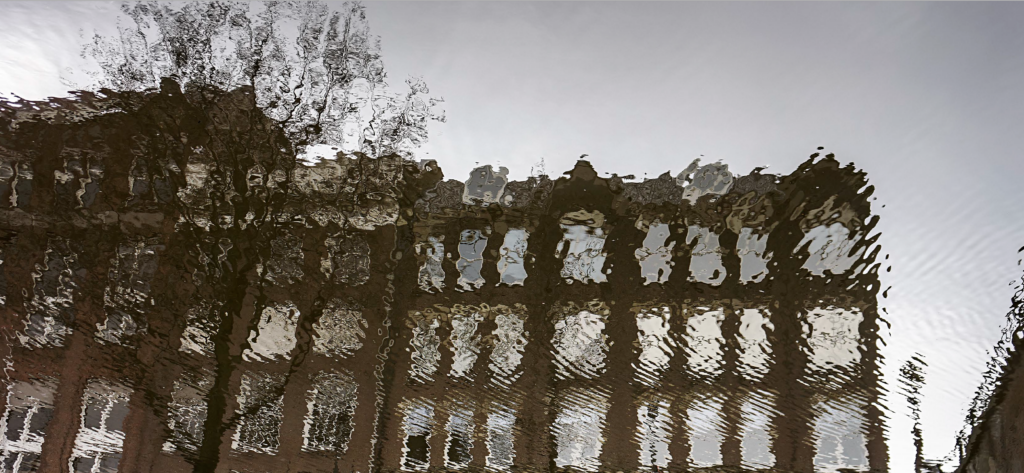Text: Erika Heet
Photography: Julian Lennon
Published as:
Julian Lennon: Behind the Lens
Julian Lennon lives life lyrically. The musician, artist, filmmaker and philanthropist has infused his poetic world view into a collection of black and white and color photographs, curated by Portia de Rossi via her art publishing firm General Public, which endeavors to bring art to everyone. “I consider it a privilege for my photography to occupy space in people’s homes—and hearts—especially at this time,” says Lennon, who is represented by Posner Fine Art. “I sincerely hope that the images we present in this series resonate in a meaningful way.” The collection is available through RH and a portion of the proceeds will benefit The White Feather Foundation, Lennon’s nonprofit organization dedicated to environmental and humanitarian causes. Interiors interviewed Julian and Portia about this collaboration; their words accompany a selection of Julian’s photographs from the collection.
Julian Lennon
Please tell us about your foray into photography.
Though I had an interest in photography, I didn’t realize I had “an eye” for it until I took the liberty of editing some photos my dear friend (renowned celebrity photographer) Timothy White had taken.
He asked me where I learned how to edit photos. I told him I just taught myself, as I’ve done with most creative elements of my life, music included…. I enjoyed the creative aspect of adjusting the colors, textures and framing to what I thought each image should become.
Timothy said, “You should do something with those,” as in… exhibit them in a show. I honestly thought he was joking. But he wasn’t, so I said if I were to seriously pursue photography, it would only be if he agreed to mentor me. He did mentor me. I had my first show in NY, “Timeless” in 2010, and here we are, nearly 12 years later…
You have said that when you see something and it moves you, there is no choice, you have to take a picture of it. Have you always had this draw to photography or has it become a bit more of an obsession over time?
I always enjoyed taking pictures, even as a young boy with my first Polaroid SX-70, which my dad bought for me when I was about 10 years old. I still have that camera.
I don’t know if I’d go so far as to say photography has become an obsession over time, but it’s definitely a passion. Today it’s just more about developing my style further, sharing the best of what I capture, and above all else, not wasting the moment…
Which cameras and equipment do you use to capture different scenes?
I generally use the SONY AR7 IV & Leica Q2, and on occasion the Fujifilm GFX 50S, but I’ve also used the Leica V-Lux and the M10-R models. In the past, I shot with a Canon 5D Mark IV. I also take a large amount of photos on my iPhone, if that’s all I have with me at the time.
How did your partnership with Portia de Rossi and General Public come about and how did you know it was the right fit for you and your work?
Wendy Posner of Posner Fine Art, who represents my photography, originally shared some of my work with Portia’s team, who then in turn shared it with Portia, who took a great liking to it.
Portia and I share a lot of the same values through our humanitarian work and in the arts, and have a mutual respect for one another that made the partnership a natural fit.
How did you finalize the images for this collection?
Wendy and I worked together to present a mix of options from my catalogue to Portia and her team. Portia was at first looking for landscapes, then expanded the variety to include some of my fly-on-the-wall lifestyle images as well. She curated the final selection, choosing what she felt best represented the aesthetic that was right for both General Public and RH.
Nature and people are prominent in your work. Why are they such inspiring subjects?
I grew up in the countryside and have a great love for the outdoors, a love of which has only intensified over the years, as a philanthropist. To see nature in such peril due to climate change gives me a greater sense of urgency to capture its beauty and wonder in the here and now.
My charity, The White Feather Foundation, works on various humanitarian and conservation projects worldwide. Many of my journeys on behalf of the charity have been to very remote, picturesque places with people from vastly diverse cultures and backgrounds. I consider it a great privilege to witness—and be allowed to capture moments from—life being lived in a way opposite from our own, and to be able to share those images, with people who either cannot afford to travel for themselves, or those with disabilities that prevent them from traveling…
Your work shifts beautifully between color and black and white. What is behind your approach to both modes? Do some scenes or subjects benefit from one or the other?
Each image depends upon its circumstance, it really is as simple as that. If a landscape is rich in color, I may preserve that through my lens. However, in some cases, the subject—whether it be a person or an object or a place—can benefit from desaturated hues to enhance the actual essence of what is being conveyed, which sometimes also depends on how I am feeling, in that moment. It is often a decision I make during the editing process.
As an artist and performer, you have lived a public life, and your photography evokes a sense of quiet solitude. Does photography provide you with a sort of calm quietude?
I do enjoy being behind the camera, far more than in front of it! Observing life as I see it from my perspective. There’s a comfort in not being the focus, but being the one to put everything into focus…
How do you know, when you’re editing shots, when you’ve landed on “the one”?
I suppose it is a bit like falling in love, to borrow from your analogy…
There has to be an attraction to the image, a visual aesthetic that sets it apart. There has to be a mutual understanding between what the subject is conveying and what the viewer is seeing. A connection, if you will, that makes it real, and present in that moment. Perhaps most important, there has to be heart. An emotion, a feeling, that’s sparked by the intimacy of whatever moment is revealed.
Could you give us a bit of backstory on the five images we’re showing?
Focus
I often take a lot of photos in motion, just because they happen that way, in the moment.
Focus I took of my friend, reflected in the side mirror of a vintage convertible, as we were riding along the coastline of Havana, Cuba. It was an impromptu shot taken during a spur-of-the-moment trip, and reminded me of one of my all-time favorite pictures, by Elliott Erwitt, California Kiss.
Rico Suave
On the same Cuba trip, my friend and I visited a breathtaking beach just outside the city, but sadly it was completely littered with broken glass bottles, which was very disheartening. Aside, the driver, who had been our guide, whilst we were wandering the beach, decided just to hop on to the bonnet of his car, to enjoy the view, and as I looked back at him, I immediately thought that I couldn’t have asked him to pose for the picture any better than his natural demeanor. So I snapped him quickly, before he moved, but for all I know, he could have been having a nap!
Every Breaking Wave
Originally part of my Cycle series, this was taken during a very meditative moment in Bali in the midst of a 10-day boating trip, around the South China Seas & Beyond. There was a storm brewing and it was almost as if the sea was reaching up to meet it.
Malibu
I lived in Los Angeles for many years and still visit several times a year. When I’m in town, I regularly take a drive to the shores of Malibu and Santa Monica, to catch my breath and watch the sunset. Seagulls have been around me all my life, and they are a reminder of certain times and places in my life, and remind me of one of my all-time favorite books—Jonathan Livingston Seagull. I captured this image on one of those stops along the beach, during my travels.
Smoking in Amsterdam
I was on a trip to Amsterdam, struck by the energy and magic of the city, when I saw this iconic-style architecture, reflecting in a rippling body of water. The softness of the blur gave it a dreamlike quality, that I thought would make a beautiful waterscape.
For you, is photography in any way like making music?
Sure, there are some parallels in the creative process. Finding the right melody could be compared to capturing just the right moment in a photograph, just as scripting the perfect lyric could be likened to framing an image in the most poetic way possible. Whatever medium I’m working within, it’s all about turning the energy I put into the art into the best possible outcome.
Where and how do you find the muse?
I find it in the peaceful sounds of ocean waves crashing against the shores and the sun’s vibration as it burns bright before disappearing behind the horizon.
I find it in the glow of a busy city, vibrant with nightlife and the sacred silence of ancient ruins that echo with ghosts from the past.
I find it in the eyes of a curious child as they discover something new and the curve of a beautiful woman’s smile.
I find it in the darkest of sorrows and the lightest of joys.
I find it in moments we live in….
Portia de Rossi
Please tell us about General Public and the concept of democratizing art.
I founded General Public with the goal of bringing great art to more people, and giving a new platform for artists to get their art out into the world. We start by 3D scanning the artists’ original work, and then use that scan to create a textured print that captures all of the detail in the original. The artists receive a royalty for every print sold, and still have the ability to sell their original work. This allows a collector to buy a print with all of the visual and physical characteristics of the original work, without a price tag based on the scarcity model.
What do you look for in an artist collaboration?
We look for artists who have a unique point of view and a body of work that is a visual expression of the artist. It certainly helps if an artist also comes to us with an open mind toward pushing the boundaries of what a piece of art can be, and how technology can play a role in their practice.
How did General Public come to collaborate with Julian Lennon and why does his work fit well with General Public?
We came to Julian’s work via the team at Posner Fine Art, and were stunned as soon as we laid eyes on it. For us it is a great fit because he approaches photography like an explorer who is compelled to share his discoveries with his viewers. You can tell that he is interested in making beautiful images without being stuck in one visual genre; he can make a landscape look just as effortless as a portrait, which is very rare.
Personally, what do you see in Julian’s work that moves you as a curator and collector?
What moves me is the tenderness with which he approaches any subject he trains his lens on. It feels like he lets his subjects be themselves, depicting the emotion and humanity within each moment. Through his images you can tell that he is interested in the world around him, and wants to take these moments and share them with us, his viewer.
Was General Public involved in narrowing down the images that would be part of this collection?
We looked at a large number of photos to get to the 18 that make up this collection. In this group we tried to present a range of images that give a sense of Julian as a photographer. There are images of all genres, and I hope that this group can give a viewer a sense of the artist.
Are these photographs limited editions or will they be printed as buyers demand?
These photographs are open edition—I am not a believer in using the scarcity model to determine an artwork’s value. A piece of art should be available to anyone who wants it, just like a great book or piece of music. I believe a work of art is valuable because it’s good, not because it’s rare.
How is the collection being received so far?
The reception has been fantastic! It is an incredibly gratifying feeling having the work out in the world. These photos resonate deeply to everyone we have talked to about them, and that speaks to the quality of the work. We are looking forward to having more and more opportunities to get great art like Julian’s out in the world.






